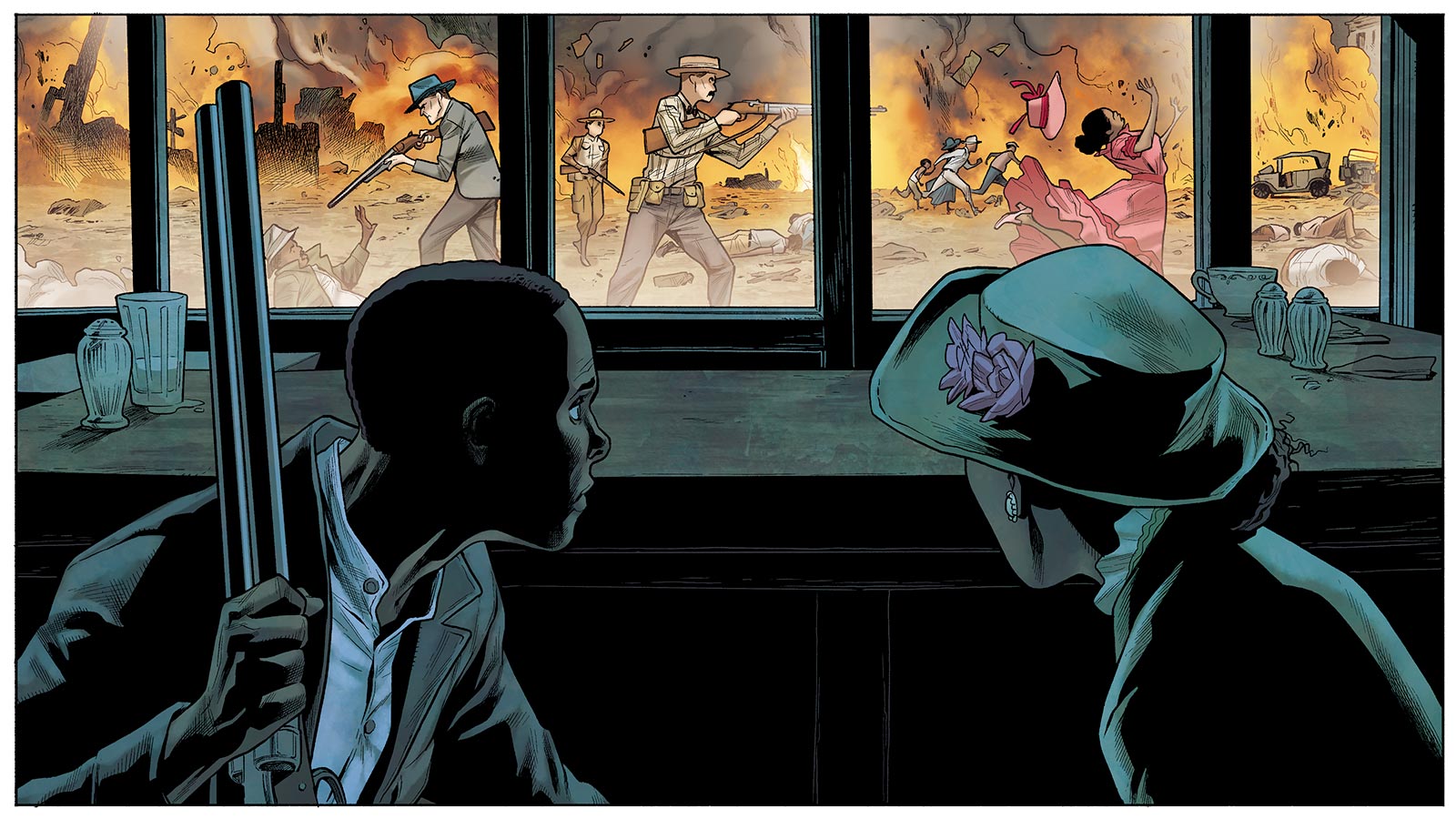
Follow this link to: The Massacre Of Black Wall Street
Dr. Scott Ellsworth is a professor of Afroamerican and African Studies at the University of Michigan and author of Death in a Promised Land, the first comprehensive history of the Tulsa massacre. He was also one of the lead scholars for the Tulsa Race Riot Commission and a key player in the battle to secure reparations for survivors. According to him, the lasting trauma of the massacre is also intrinsically tied to the silencing of survivors.
“For 50 years, the story was actively suppressed in Tulsa, and it was deliberately kept out of the White newspapers. The people who brought it up were threatened with their jobs; they were threatened with their lives,” he says. The story of the massacre indicts White America, which is why it was buried for so long. Without the perseverance and openness of the survivors of the riot, he says, there would be no mainstream acknowledgment of what happened in 1921.
“Many Tulsans are just happy people are talking about [the massacre] at all,” adds Dr. Alicia Odewale, assistant professor of anthropology at the University of Tulsa. Odewale is currently working on a research project called Mapping Historical Trauma in Tulsa from 1921-2021 that reanalyzes historical evidence to visualize what happened to Greenwood during the massacre and in the years that followed it. “Ninety-eight years later, almost all of the massacre survivors have passed on, and it’s up to their descendants and the people left alive today to carry on their legacy.”
As of 2019, the city of Tulsa has yet to award reparations to the families of survivors and victims of the massacre. “The total estimated financial loss, taking into account the destruction of both private residential property and property in the business district would be about $50-100 million in today’s currency,” Odewale says. The neighborhood, in addition to being subjected to the on-the-ground assault, was bombed from above by planes carrying White assailants.
As an added insult, it took almost a full century for the search for the mass graves of victims to begin in earnest; they are currently ongoing. “If we discover the remains of victims, are able to identify them, and if those people are reburied with honors, that will be a huge moment for the city,” says Ellsworth. But it’ll be a moment for the country, too.
“White people remember history differently than African Americans do, and the reality is that we have one common history. There’s only one American history, and until we are able to confront the bad parts as well as the good parts, we’re never going to be on the same page on how we view the country, its promises, its problems,” Ellsworth says. “We still have a lot of work to do in Tulsa. There is no question. There is still a lot of hurt and anger over this.”
The hurt remains in part because of what happened after the fires burned out. In the days that followed the massacre, insurance companies refused to reimburse the damage done to Greenwood, since “riots” were not covered. As a result, in the weeks that followed the massacre, many of Tulsa’s Black residents were forced to languish in the makeshift holding areas they’d been taken to that night, or leave the city—and the community that they’d built—altogether.
“The accumulation of a massive amount of wealth and the loss of income that would have been earned, had Greenwood been allowed to thrive undisturbed, is almost incalculable,” says Odewale. “But just as important are the things that can’t be quantified, such as the loss of the sense of safety in their own city, the loss of trust in city officials, law enforcement, and in some cases, in people altogether.”
This isn’t to say that Greenwood was defeated. Over the next couple years, almost every destroyed home was rebuilt; in 1925, the National Negro Business League hosted its annual conference in the neighborhood, signaling the revival of Greenwood as a hub for Black business and entrepreneurship. The following decades brought commerce and culture back onto Greenwood Ave, and more recently, the city has made commercial investments into revitalizing the area.
But for many long-time Greenwood residents, revitalization is not reconciliation. In fact, revitalization can often be a codeword for gentrification that prices and pushes out community institutions, especially those owned by Black residents. At its worst, it might be a form of erasure. Some sources have theorized that the massacre was a calculated attempt by the city to seize the land, one that has taken on a new, contemporary form. “Modern-day gentrification and urban renewal projects, more commonly referred to in North Tulsa as ‘urban removal,’ continue to try to gobble up what is left of Greenwood,” Odewale says, adding that those “renewal” efforts aren’t targeted to who they should be. “The equality indicators released by the City of Tulsa every year continue to demonstrate that North Tulsans and South Tulsans are living completely different lives in what seems like two different cities…. Unfortunately, Black citizens in North Tulsa fall to the bottom of every metric.”
It took 80 years for the city to release an official report on the massacre, which recommended multiple forms of restitution, including financial reparations for survivors and their families. Calls for those reparations have been dismissed at multiple levels of the justice system, including the U.S. Supreme Court.
“I’m not sure any amount of money or social services, offered 98 years later, can make up for [the massacre],” Odewale says. “I’m in awe of how resilient the North Tulsa community continues to be, as efforts to rebuild and revitalize the Greenwood district have been ongoing since 1921. But at the very least, in my opinion, we need to have a serious plan for reparations, free housing and business support for descendant families, Greenwood business grants, college tuition scholarships for young students in North Tulsa…and a serious effort to close the median income gap between White and Black families in Tulsa.”
Odewale’s incisive perspective on the ways racial traumas of the past evolve and take form in the present is prescient for an entire country rife with incidents of White-on-Black violence, like the city-wide riots in Detroit in 1943, which mostly took its toll on Paradise Valley, a Black neighborhood. It helps illuminate truths about the relationships between segregation and law enforcement, land loss and land robbery, gentrification and history.
What should Greenwood and Tulsa look like today? We might start to answer that question by seeing what it looked like in the spring of 1921.
REQUIRED READING ON THE TULSA MASSACRE
- The Tulsa Race Riot and Three of Its Victims, by B.C. FranklinAn unpublished manuscript written 10 years after the massacre by a witnessing survivor.
- Black Wall Street: The African American Haven That Burned and Then Rose From the Ashes, by Victor LuckersonA reported, researched look at the glory, razing, and rebuilding of Greenwood.
- Death in a Promised Land: The Tulsa Race Riot of 1921, by Scott EllsworthThe first comprehensive history of the events leading up to, during, and after the massacre.
- Tulsa Race Riot: A Report by the Oklahoma Commission to Study the Tulsa Race Riot of 1921The published findings of an independent expert panel on the consequences of the massacre.
- ‘They Was Killing Black People,’ by DeNeen L. BrownA reported article about the lingering damages of the massacre, and how it affects Tulsa today.










